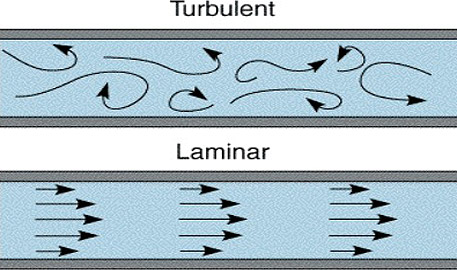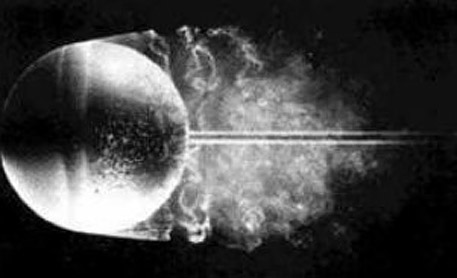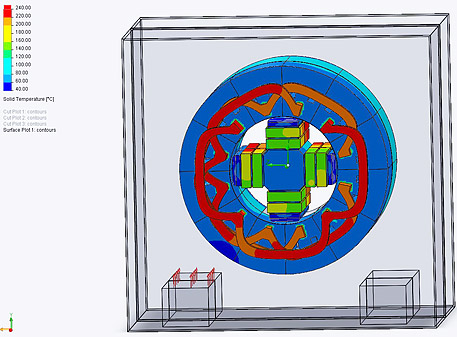For low speeds, the flow particles move according to clearly arranged layers; this is known as laminar flow. For high speeds, the flow is characterized by three-dimensional, stochastic movements, this is called turbulent flow. The speed can be measured as time-dependent but it varies around mean values. By increasing the speed of an originally laminar flow, it will become a turbulent structure after passing a determined value. Through the switching of fans, turbulent flow will rise due to the high speeds as well as the strong swirl.

Laminar and turbulent flow in a channel

Turbulent flow after a ball
In a solid, the heat is transported through conduction. This is characterized by the conduction coefficient λ. In a flowing liquid or gas, the heat can also be transported through the flow. This is the so-called convection, which is characterized by the heat transfer coefficient α.
When the cooling medium is pushed through the machine, for example through the use of fans, the cooling phenomenon is called forced convection.
When the cooling medium is neither accelerated by fans nor by the rotation of a rotor, a
slow moving laminar flow can rise due to temperature differences of the cooling medium,
which provoke density differences. The resulting heat transfer between the solids and the cooling medium is called free convection. Due to the time dependence of this phenomenon, the CFD calculations should be performed
time-dependently with the input of adequate time steps.

Surface temperatures of the E-Cooling tutorial electrical motor
The temperatures in the solids and of the walls are linearly dependent with the conduction, whereas the dependency of wall temperatures and neighbouring cooling fluids are ruled by the convection.
Conduction and convection need to be calculated simultaneously; this is called conjugated heat transfer.
Through the setting of the heat transfer option, the energy equation will be
solved in addition to the continuity and momentum equations. The energy equation makes the relation between temperature differences, heat fluxes, and velocity gradients.